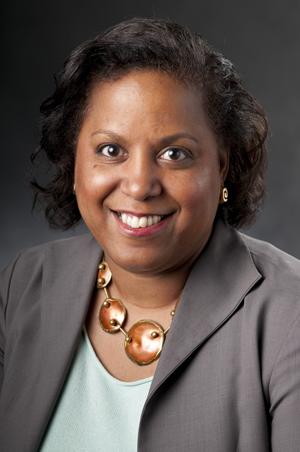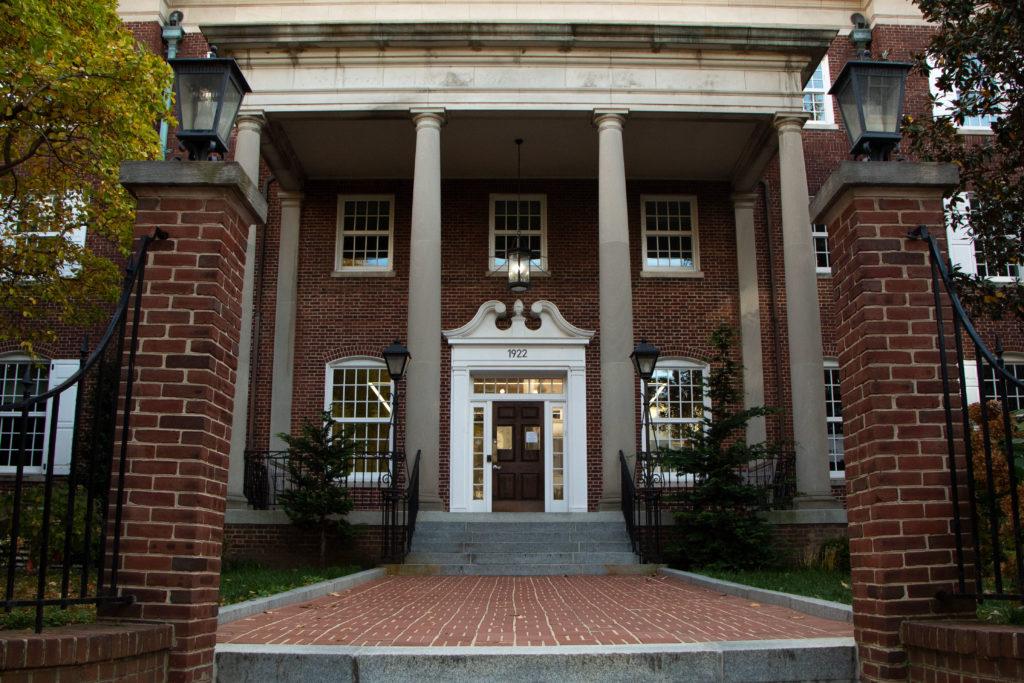The University’s first vice provost for budget and finance is planning one of the University’s largest financial reforms that will take shape over the next two years, easing a sometimes-contentious budgeting process.

Charged with reforming GW’s decade-old budget model after being hired away from Michigan State University, Rene Stewart O’Neal said the current system is holding the University back from “leaping ahead” because administrators cannot test out the efficiency of programs and practices.
“There are a lot of adjustments that have to be made. It’s almost like [the budget model] was built school by school,” Stewart O’Neal said. “Nobody can explain it and nobody understands it.”
By the time the reforms are made, she said GW’s colleges will see a budgeting system that helps them better project the future costs and payoffs of moves like adding faculty, starting programs and growing enrollments. Colleges at GW have sometimes been held back from improving because the financial implications of moves were unclear, she said.
It’s the first time GW will be able to plan out what a decision will cost years down the line, although GW’s competitor schools like New York, Boston and Northwestern universities have been using similar systems for years.
For example, if the University wanted to update technology in every classroom, the budget model has not been able to plan for future costs like maintenance and replacements.
“As we’re holding schools more accountable and really thinking about having more financial control and oversight, we have to give people the tools to do that,” she said.
The system will also help deans understand why the University’s central administration takes a larger cut of one school’s revenue than another’s by likely adopting a hybrid of what is known as a “responsibility-centered management” model.
It will replace the University’s current unified budget model, which sets up each school’s budget for costs they project for that year. The University sets the amount it will take from each school’s revenues, known as a margin, before the fiscal year starts.
“There’s not really a strong rationale that can be explained as to why one school’s margin is so radically different from another,” Stewart O’Neal said. “Even though it was called a unified budget model, it’s anything but.”
The GW School of Business, for example, has battled the central administration for the past decade to keep at least half of what it makes from tuition and other revenue streams. Before former dean Doug Guthrie began his deanship in 2010, the business school was allowed to keep 44 percent of its revenues, down from 48 percent three years prior.
It’s a tense issue, and one that caused business school leaders to call on faculty to rise up against what one professor called “the true enemy” in Rice Hall for relying on some schools’ programs as “cash cows” to fund the rest of the University. That came as top administrators fired Guthrie after the sides could not agree on how to close a $13 million spending gap.
Currently, the University has six schools that pool their revenues to help pay for the central administrative functions and pitch in money if one school’s enrollment drops.
Three schools, including the GW Law School, the School of Medicine and Health Sciences and the School of Public Health and Health Services, foot all their own operating costs. The new budget model will only impact the six “unified” schools.
The model will “give schools some control over their own destiny,” Stewart O’Neal said, because they compete under a budget system that rewards the most profitable colleges by giving them a larger piece of their revenues. The system will still help cushion other schools that are less financially independent, she said.
Some leaders of GW’s competitor schools like Boston and Vanderbilt universities have warned the responsibility-centered management system forces too much competition among schools, and some schools may discourage students from taking classes in other schools for the fear of losing revenue.
Larry Goldstein, president of higher education financial consulting firm Campus Strategies, said that system creates “an entrepreneurial spirit” across a university because the more revenue a school generates, the more it gets to keep.
“If I’m a dean and I’m in an RCM environment, I’m in a position to convince my faculty to generate more revenues because schools will benefit directly,” Goldstein, a former senior vice president and treasurer for the National Association of College and University Business Officers, said. “Then departments that are contributing, I can reward.”
Economics professor Anthony Yezer, who sits on the Faculty Senate’s budget and audit committee, said GW has been far behind its competitor schools that have allowed schools to test the financial impact of decisions before they are finalized.
That Faculty Senate committee will work closely with Stewart O’Neal during the system’s implementation. Yezer added that the model needs to let departments and schools project the consequences of alternative options for at least five years.
“We don’t have anything nearly close to a modern business model,” said Yezer, who also created the budget model for the U.S. Postal Service in 2007. “We don’t have to do anything new, we just have to do what everyone else does.”








